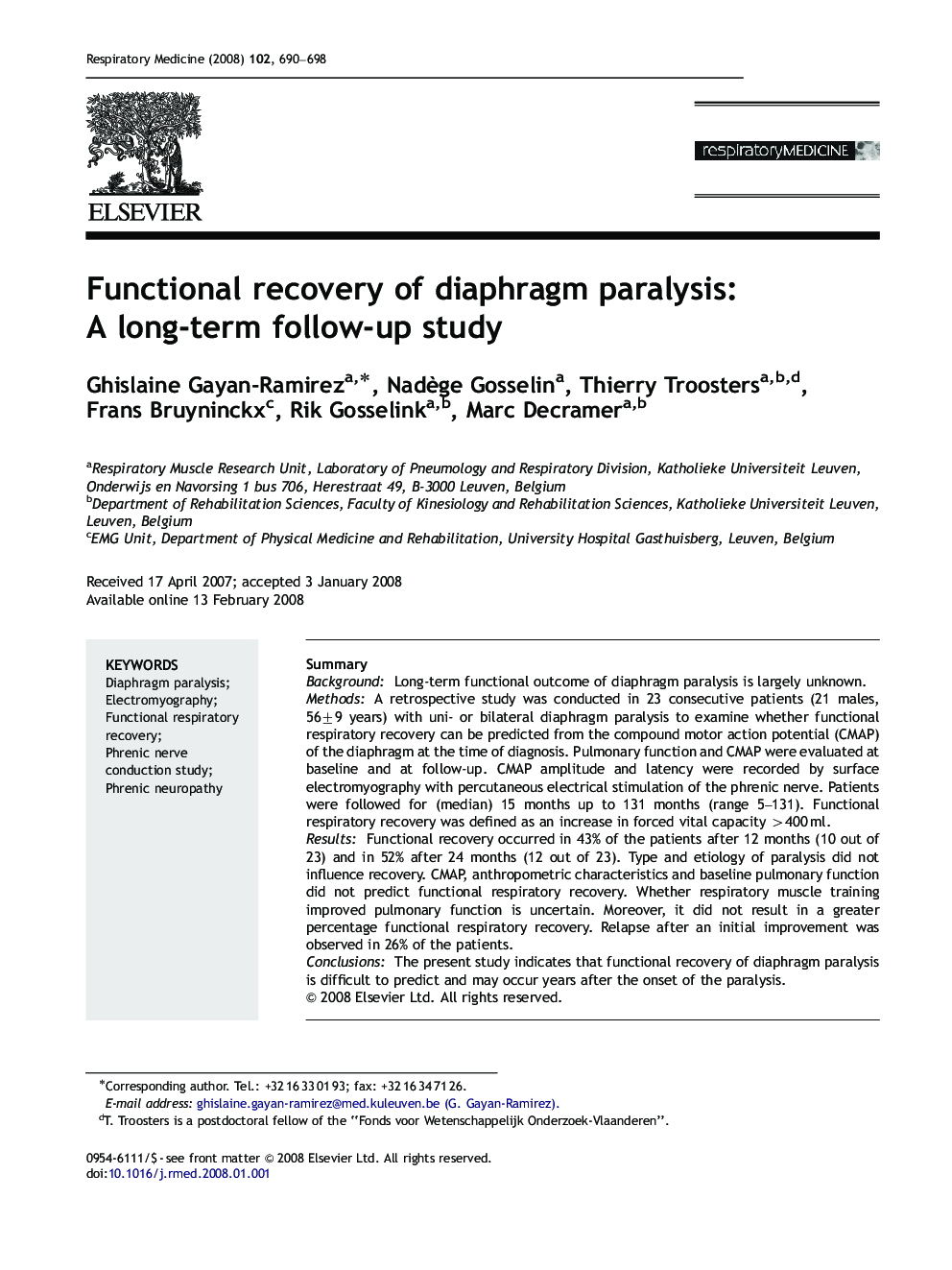| Article ID | Journal | Published Year | Pages | File Type |
|---|---|---|---|---|
| 4211173 | Respiratory Medicine | 2008 | 9 Pages |
SummaryBackgroundLong-term functional outcome of diaphragm paralysis is largely unknown.MethodsA retrospective study was conducted in 23 consecutive patients (21 males, 56±9 years) with uni- or bilateral diaphragm paralysis to examine whether functional respiratory recovery can be predicted from the compound motor action potential (CMAP) of the diaphragm at the time of diagnosis. Pulmonary function and CMAP were evaluated at baseline and at follow-up. CMAP amplitude and latency were recorded by surface electromyography with percutaneous electrical stimulation of the phrenic nerve. Patients were followed for (median) 15 months up to 131 months (range 5–131). Functional respiratory recovery was defined as an increase in forced vital capacity >400 ml.ResultsFunctional recovery occurred in 43% of the patients after 12 months (10 out of 23) and in 52% after 24 months (12 out of 23). Type and etiology of paralysis did not influence recovery. CMAP, anthropometric characteristics and baseline pulmonary function did not predict functional respiratory recovery. Whether respiratory muscle training improved pulmonary function is uncertain. Moreover, it did not result in a greater percentage functional respiratory recovery. Relapse after an initial improvement was observed in 26% of the patients.ConclusionsThe present study indicates that functional recovery of diaphragm paralysis is difficult to predict and may occur years after the onset of the paralysis.
